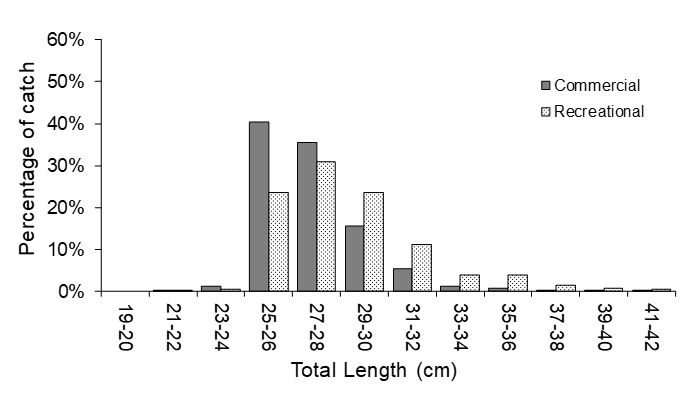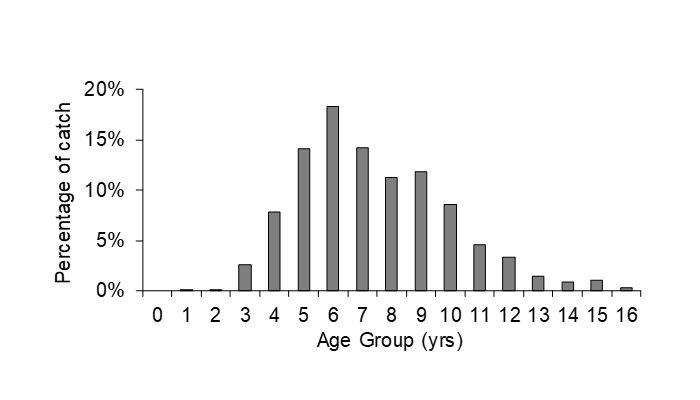Yellowfin bream stock
Species
- Yellowfin bream (Acanthopagrus australis)
Fish stock status
Although a species may be classified as sustainable under the Status of Australian Fish Stocks (SAFS) framework, this does not mean that the stock is meeting Queensland targets under the harvest strategy.
| Stock | 2023 | 2020 | 2018 | 2016 | 2014 |
|---|---|---|---|---|---|
| Eastern Australian | Sustainable | Sustainable | Sustainable | Sustainable | Sustainable |
Stock assessment
Monitoring
The biological monitoring program collects data on length, sex and age of fish caught by commercial fishers between Baffle Creek (north of Bundaberg) and the Queensland–New South Wales border.
Recreational fishing data is collected through the boat ramp survey and Keen Angler Program. The study area extends to Cooktown.
Data collection began in mid-2006 and is ongoing.
Monitoring area
© Queensland Government
Length
Overall, recreational and commercial fishing sectors harvest a similar length range of yellowfin bream (25cm total length to over 40cm total length).
Yellowfin bream greater than 27 cm total length make up a higher percentage of the recreational catch than the commercial catch (Graph 1). It is most likely that this difference is due to fishing gear selectivity, but it may also be from recreational fishers retaining fish that yield larger fillet sizes.
Graph 1: Length frequency
Age
Each year, 250–300 yellowfin bream otoliths are examined to determine their age. The age is analysed along with fish lengths from the same year to determine the percentage of fish in each age group within the yellowfin bream harvest (also referred to as the age structure of the harvest).
Yellowfin bream can live for more than 15 years, but they are most commonly harvested between 5 and 9 years old (Graph 2).
Graph 2: Age frequency
Ecological risk assessment
Assessed as bycatch in the:
- 2018: Southern Queensland east coast otter trawl fishery and river and inshore beam trawl fishery (PDF, 4MB)
- 2012: East coast otter trawl fishery in the Great Barrier Reef Marine Park (led by the Great Barrier Reef Marine Park Authority)
Management
East coast inshore fishery:


